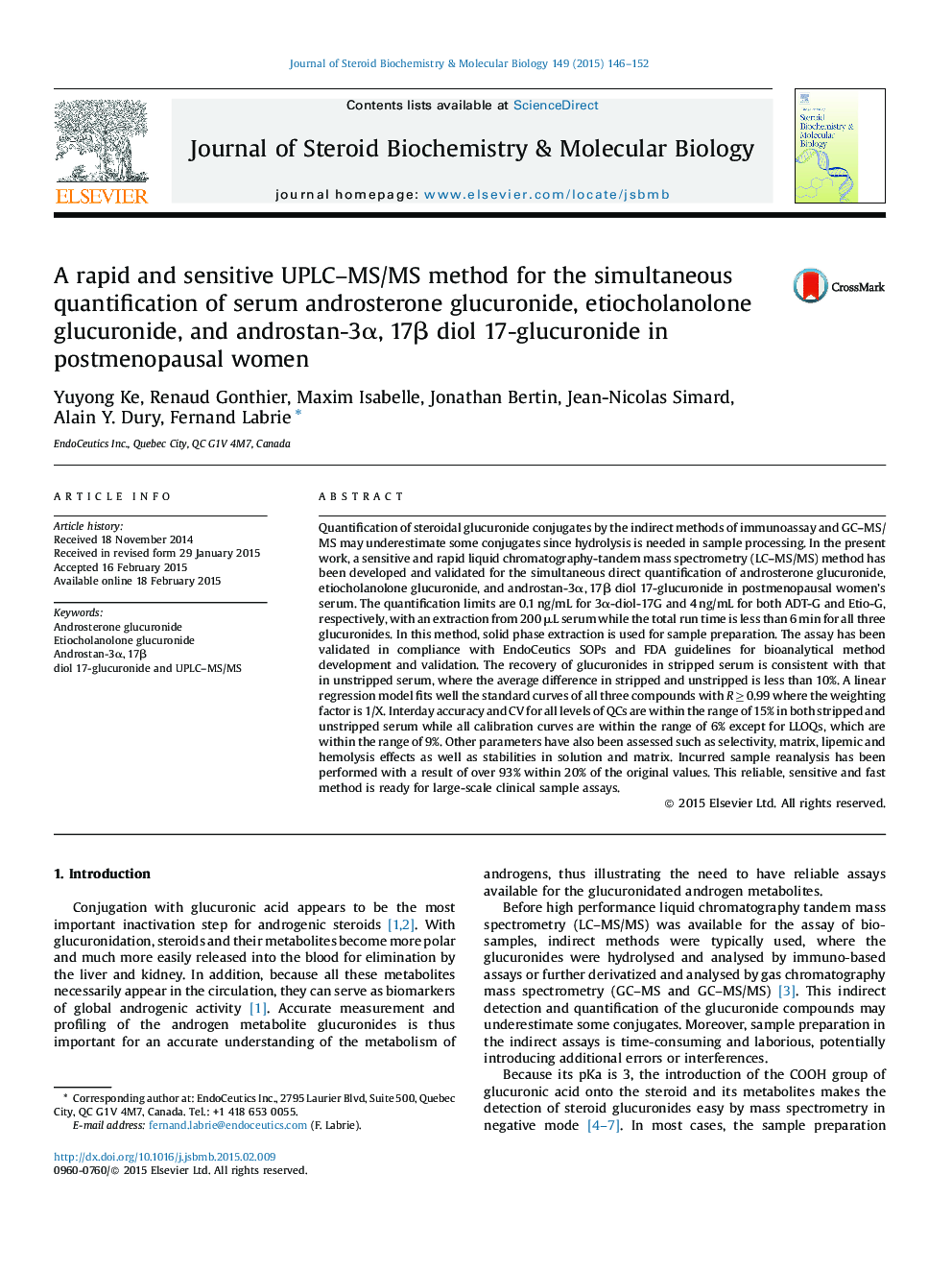| Article ID | Journal | Published Year | Pages | File Type |
|---|---|---|---|---|
| 1991529 | The Journal of Steroid Biochemistry and Molecular Biology | 2015 | 7 Pages |
•Quantitation of androsterone-, etiocholanolone- and 3α, 17β diol 17-glucuronides.•An assay for androstan-3α, 17β diol 17-glucuronide at a LLOQ of 0.1 ng/mL.•A highly specific method with a run time shorter than 6 min.•A fully validated method in full compliance with the FDA guidelines.
Quantification of steroidal glucuronide conjugates by the indirect methods of immunoassay and GC–MS/MS may underestimate some conjugates since hydrolysis is needed in sample processing. In the present work, a sensitive and rapid liquid chromatography-tandem mass spectrometry (LC–MS/MS) method has been developed and validated for the simultaneous direct quantification of androsterone glucuronide, etiocholanolone glucuronide, and androstan-3α, 17β diol 17-glucuronide in postmenopausal women’s serum. The quantification limits are 0.1 ng/mL for 3α-diol-17G and 4 ng/mL for both ADT-G and Etio-G, respectively, with an extraction from 200 μL serum while the total run time is less than 6 min for all three glucuronides. In this method, solid phase extraction is used for sample preparation. The assay has been validated in compliance with EndoCeutics SOPs and FDA guidelines for bioanalytical method development and validation. The recovery of glucuronides in stripped serum is consistent with that in unstripped serum, where the average difference in stripped and unstripped is less than 10%. A linear regression model fits well the standard curves of all three compounds with R ≥ 0.99 where the weighting factor is 1/X. Interday accuracy and CV for all levels of QCs are within the range of 15% in both stripped and unstripped serum while all calibration curves are within the range of 6% except for LLOQs, which are within the range of 9%. Other parameters have also been assessed such as selectivity, matrix, lipemic and hemolysis effects as well as stabilities in solution and matrix. Incurred sample reanalysis has been performed with a result of over 93% within 20% of the original values. This reliable, sensitive and fast method is ready for large-scale clinical sample assays.
